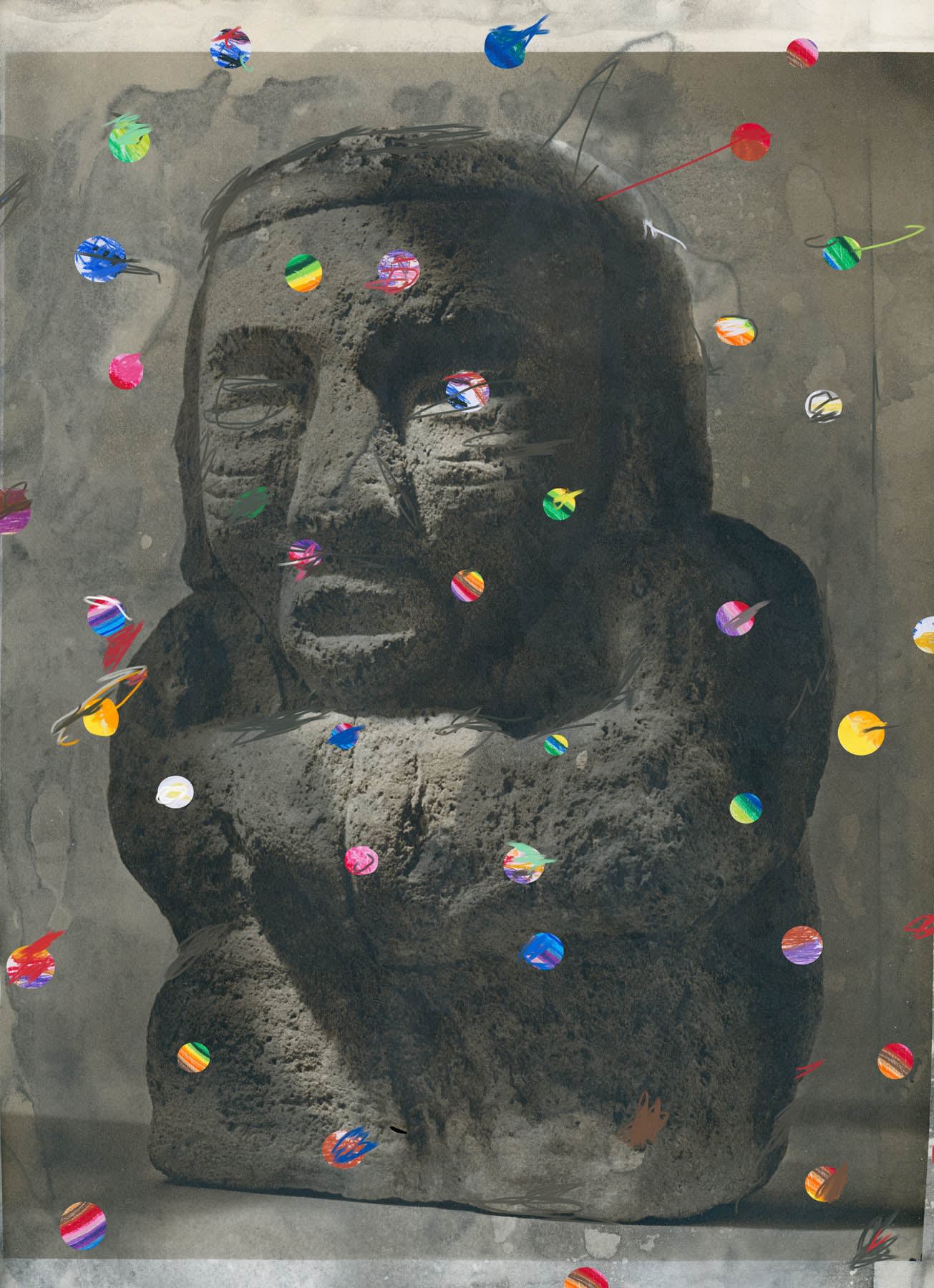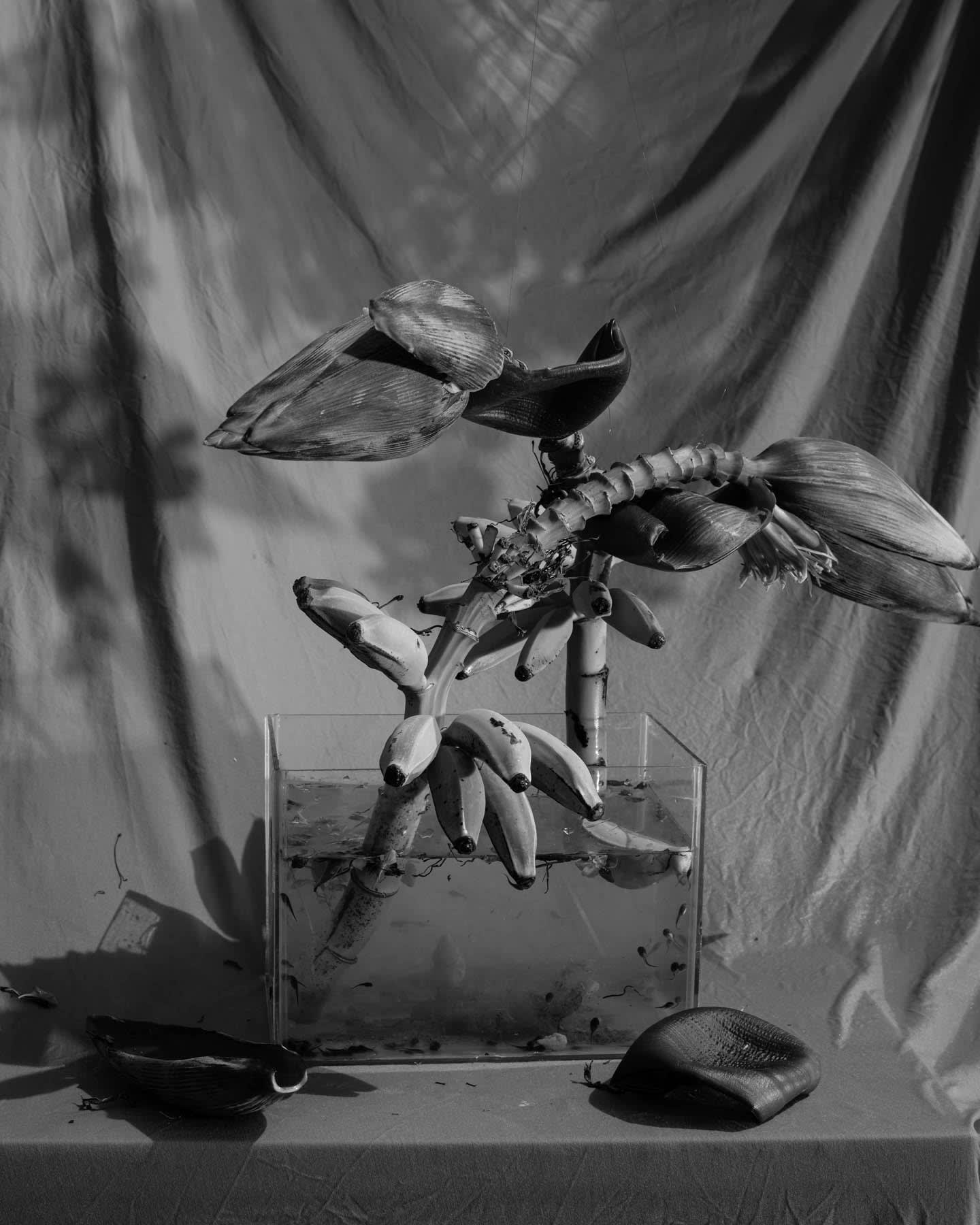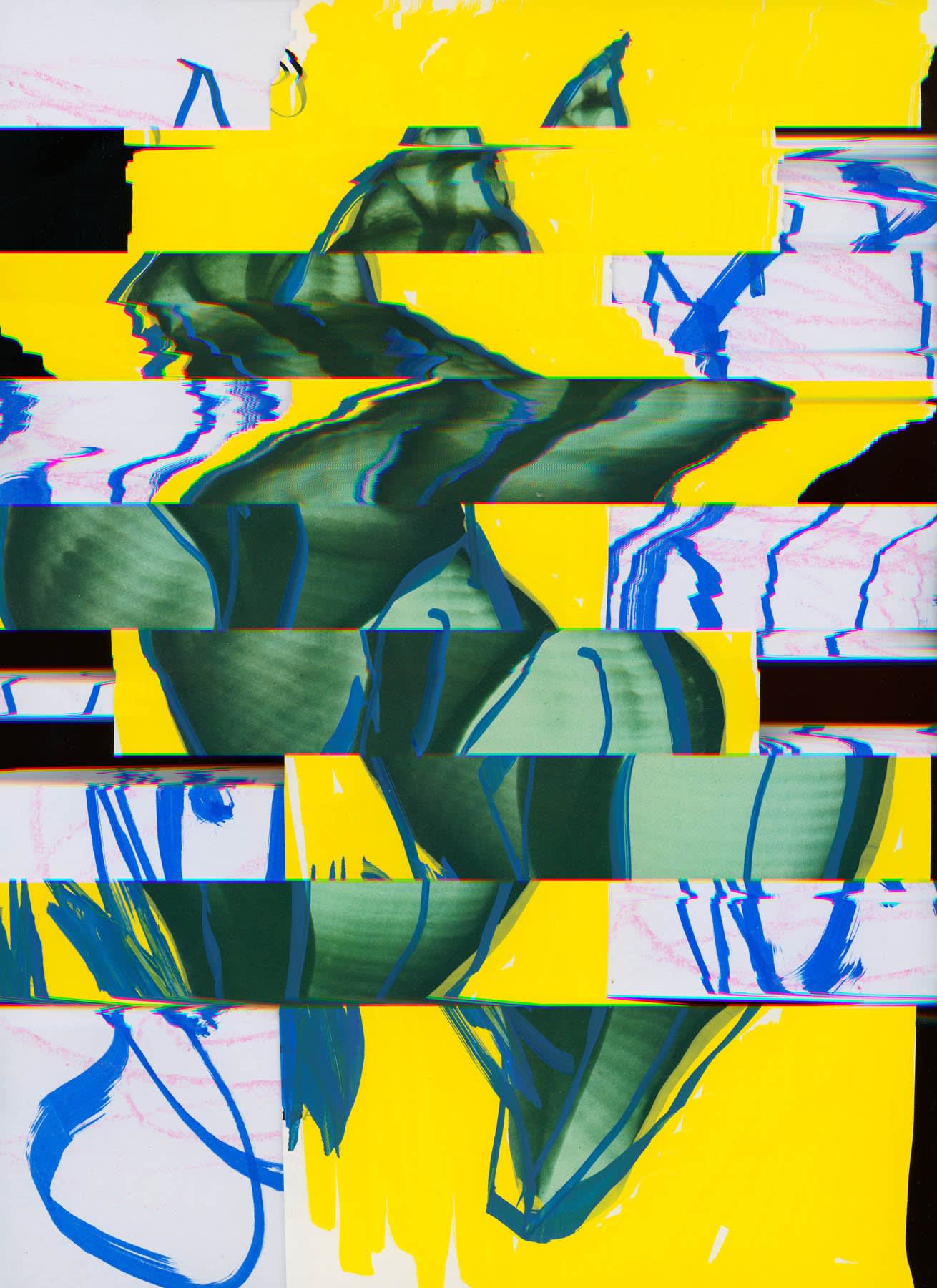In a new exhibition, South African artist Nico Krijno reimagines the photographic process to conjure his own unique constellation of imagery — playfully collaging, cropping, and experimenting across the medium.
A cascade of photographs, flowing down from the ceiling, parts the framed pictures on the wall of The Ravestijn Gallery in Amsterdam. Paper rolls bursting with collaged imagery are interspersed throughout the space. In an image-saturated, screen-filled world, the physical spill of photographs is arresting. Something so ephemeral finds a physical form that pushes beyond a simple print on a wall; a series of elements coming together to form a colorful territory that the South African artist Nico Krijno has titled The Constellation.
 Installation view of 'The Constellation' by Nico Krijno at The Ravestijn Gallery
Installation view of 'The Constellation' by Nico Krijno at The Ravestijn Gallery
A constellation describes a group of stars forming a pattern. It is a way to recognize individual stars and make sense of the night sky. It is a tool, reliant on agreed-upon but made-up concepts—the hunter Orion, the bear Ursa Major, the Gemini twins, the Northern cross—created by humans to decipher what is above. It is an apt title for Krijno’s imagery, filled with its various visual codes and symbols, moving back and forth between the recognizable and the obscure. Polka dots, floral arrangements, impossibly-balanced structures, sculptural busts, and masks appear and disappear throughout the photographs. The artist positions and disrupts any preconceived patterns the viewer might hone in on, leading the eye from picture to picture, presenting what Krijno calls “uncanny, unreliable evidence about a fragmented reality.”

There is a feeling of unbridled play to the images as experiments run rampant through this constellation guided by the artist’s personal visual language. One can’t easily characterize Krijno’s work. Straight, relatable images are offset by abstractions. Photographs are placed onto and then moved across scanner beds, freezing the undulating forms. The layering of imagery highlights the possibilities and problems of the camera, nodding to a world that exists beyond the camera lens.
In his own words, photography is a medium “full of exciting mystery and magic,” one that allows him to “distort and explore the irregularities in information and the depiction of objects as one-off staged performances for the camera.”

The performative aspect of the work is grounded in the artist’s background in theater and film. He looks at his theatre training as a general preparation for life. Fusing sculpture, painting, performance, and photography, Krijno creates collages both physically and digitally. Starting with a sketch or an image in his head, he builds his staged tableaux, “constantly changing the lighting and arrangement of objects for the camera, skewing perspectives, overlapping shadows, adding, subtracting, intersecting and interleaving the photographic information.”


The wooden structures and teetering balanced objects that emerge throughout this constellation call back to sculpture and pattern study works from 2018 and 2015. In his 2020 project Lockdown Collages, Krijno, isolated in his home with his family away, used encyclopedic images—Japanese floral arrangements, marble faces, and household items—to create horizontally sliced and vertically stacked compositions that vibrate with color and texture.
The artist’s practice is not one of discrete projects, nor fixed starts and stops; rather he refers to his working method as “a dance to see how the objects react together, the mistakes and limitations of the process as well as the effort involved in the making becoming very important as part of the outcome.” On his website, photographs, installation shots, texts, and GIFs build as one scrolls. The process always piles up.

The Constellation #059, 2022 © Nico Krijno / courtesy The Ravestijn Gallery
To that end, The Constellation can also be experienced in multiple forms. It is also accessible via a virtual walk-through or 3D tour on the gallery’s website. The exhibition is well suited to this digital environment and the particularities of its format—as you click through, the space shifts, almost warping, as if teleporting you through the gallery; the colors blur, the walls realign, and the work pulls you in. The waterfall effect of the poster rolls extends the show three-dimensionally as well as to hint at the artist’s process—both in reference to books and to the neverending movement of making.
The exhibition is also accompanied by a new publication, Collages 2020-2022, published by Art Paper Editions and designed and edited by Jurgen Maelfeyt. At first glance, a book may seem contrary to Krijno’s work, which at times feels uncontainable, in all of its overflowing glory. And yet imagery sprung from the pages of books—Krijno never sources from the internet—is constructed, knocked down, layered and ultimately finds itself reborn between two covers.
While the exhibition is immersive, swallowing the viewer up, confronting them with color at every turn, the book feels like catching lightning in a bottle. It has been captured momentarily, sealed up to return to, leaking light, color, and motion out into the world with every page turn. He notes that “making a book is both a line in the sand and a departure into new territory.” In his prints, installations, books, and even on his website Krijno has found a way to create a living medium of his own, filled with moments of transformation, collision, and surprise.

